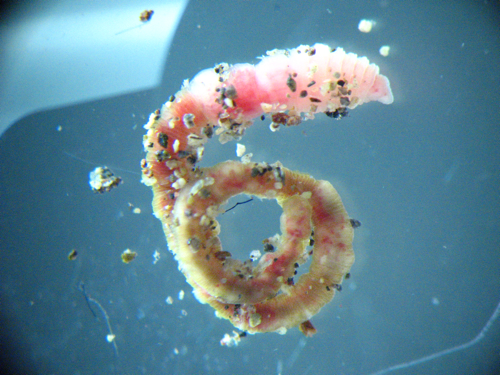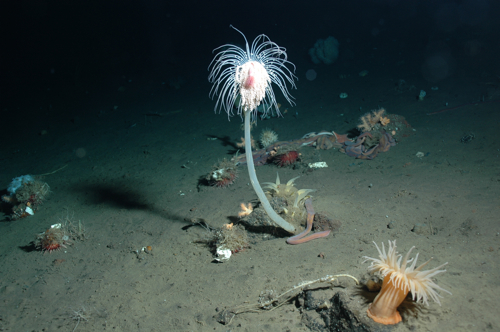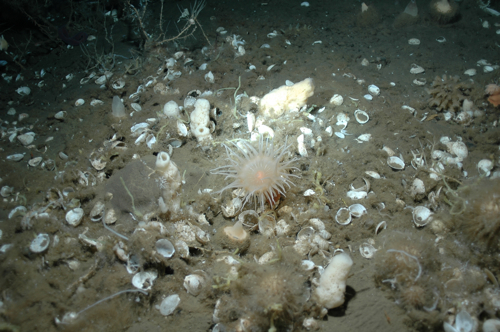What are organisms adapting to?
A question we've been receiving from students is: "Okay I get the idea of adaptations, but why do adaptations occur?" This is a great question and a major component of Dr. Marsh, Stephanie, and Annamarie's work. Let's take a look at some of the factors that might result in adaptations.
Abiotic Factors
Abiotic Factors is the fancy way to say all of the non-living parts of the environment. Examples include temperature, water, sunlight, air, rocks, sand, mud, salinity, pH, and humidity. Organisms must have ways for dealing with changes in abiotic factors. For example, what happens when there is a change in temperature? What happens when there is a lack of sunlight?

Temperature
One of the major abiotic factors that Dr. Marsh and his team are interested in is temperature. The main question is this: "How does an organism, like Capitella, respond to changes in temperature?" Dr. Marsh and his team are interested in answering that question at a cellular level. What is going on inside the cells of the Antarctic Capitella when there is a change in the temperature? How do those changes compare to the other species of Capitella found elsewhere in the world?

Biotic Factors
If abiotic factors means all of the non-living components of an ecosystem, then Biotic Factors must mean all of the living parts of the environment. Biotic factors include other plants and animals that are found in the same ecosystem. So, all of the organisms that we have shared with you through photographs are biotic factors in the McMurdo Sound ecosystem.

Predation
Biotic factors also result in adaptations that we see in organisms. Predation is an interaction where one organism kills and eats another organism. Often, adaptations develop to try and prevent predation from happening to an organism. For example, sea sponges that we have shown you often shed fibers, called spicule, that surround them on the sea floor. Sponge spicule mat is designed to keep sea stars, sea urchins, and other organisms who might eat the sponge from getting close. Other sponges actually produce chemicals that prevent other organisms from attaching to and growing on them.

Summary
Adaptations occur because of abiotic and biotic factors. Organsims usually have adaptations due to both factors. By understanding how organisms respond to changes in abiotic and biotic factors, we can learn a great deal about their adaptations, just as Dr. Marsh and his team are doing with Capitella.


Comments